There is no need to introduce Xiaomi, it is one of the largest companies that has managed to establish itself as a manufacturer of smartphones with an almost reference price-performance ratio. But the Chinese corporation produces a lot of smartphones – for about the same price, there are five, or even more, very similar options. This article is a kind of rating of 2021, in which only the best models are collected: both good but inexpensive Xiaomi phones and uncompromising flagships. All prices are taken from the e-Katalog.
Xiaomi Redmi 9A
From 6 990 rubles
- Display: 6.53 inches, 1600 × 720, IPS, 60 Hz.
- Processor: MediaTek Helio G25, 12nm, 4 × 2.0 GHz (Cortex-A53) + 4 × 1.5 GHz (Cortex-A53).
- RAM: 2 GB.
- Storage: 32 GB, microSD cards.
- Main camera: 13 megapixels (f / 2.2).
- Front camera: 5 MP (f / 2.2).
- Battery: 5000 mAh, 10 W, microUSB.
- NFC Chip: no.
- Pre-installed operating system: Android 10, MIUI 12.
The basic version of Redmi 9A is the cheapest of the current Xiaomi models that you can buy. But you should immediately be prepared for the fact that with 2 GB of RAM and 32 GB of storage, as well as an economical processor, you should not count on much. This option is only suitable for users who need calls and simple photos from their smartphone, like snapshots of documents in good lighting. The smartphone does not have NFC for contactless payments and even a fingerprint scanner – Redmi 9A will become a reliable dialer, but nothing more.
Xiaomi Redmi 9C
From 10 200 rubles
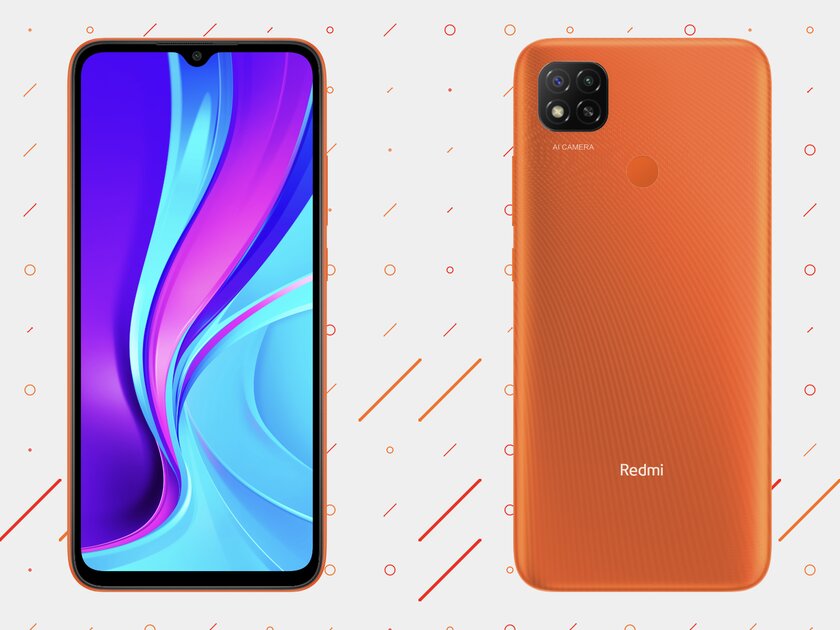
- Display: 6.53 inches, 1600 × 720, IPS, 60 Hz.
- Processor: MediaTek Helio G35, 12nm, 4 × 2.3 GHz (Cortex-A53) + 4 × 1.8 GHz (Cortex-A53).
- RAM: 3 GB.
- Storage: 64 GB, microSD memory cards.
- Main camera: 13 MP (f / 2.2) + 2 MP (f / 2.4, macro).
- Front camera: 5 MP (f / 2.2).
- Battery: 5000 mAh, 10 W, microUSB.
- NFC chip: yes.
- Pre-installed operating system: Android 10, MIUI 12.
Unlike the Redmi 9A, the 9C model with 3 GB of RAM is already suitable for the role of a budget smartphone, but the main one. It has a more powerful processor, as well as a fingerprint scanner and NFC – the device can already be used comfortably on an ongoing basis, but you should not rely on games or heavy tasks either. But there will be no problems with instant messengers and surfing the Internet. Cameras match the price of a smartphone.
Xiaomi Redmi 10
From 13 440 rubles
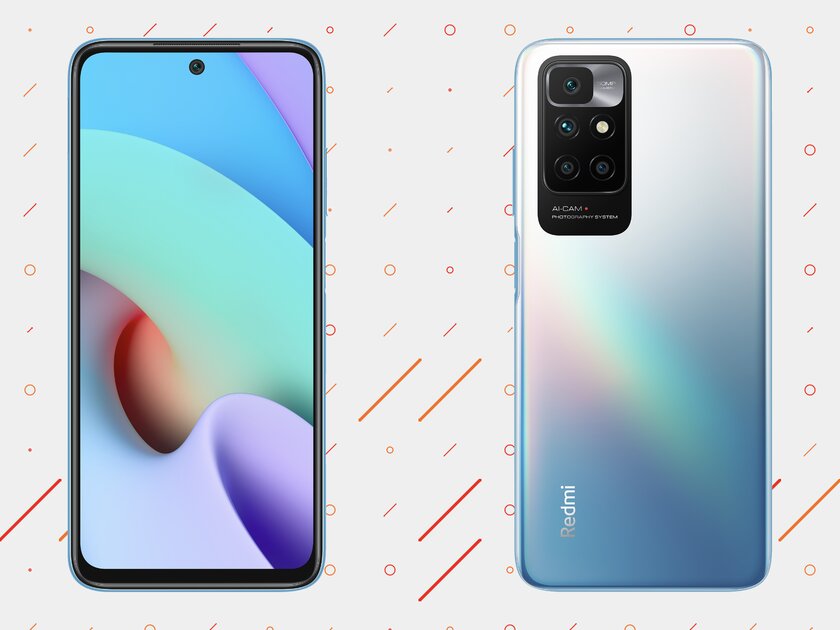
- Display: 6.5 inches, 2400 × 1080, IPS, 90 Hz.
- Processor: MediaTek Helio G88, 12nm, 2×2.0GHz (Cortex-A75) + 6×1.8GHz (Cortex-A55).
- RAM: 4 GB.
- Storage: 64 GB, microSD memory cards.
- Main camera: 50 MP (f / 1.8) + 8 MP (f / 2.2, ultra wide-angle) + 2 MP (f / 2.4, macro) + 2 MP (depth sensor).
- Front camera: 8 MP (f / 2.0).
- Battery: 5000 mAh, 18 W, USB-C.
- NFC chip: yes.
- Pre-installed operating system: Android 11, MIUI 12.5.
The above models are typical representatives of the ultra-budget segment, but the Redmi 10 is a new step, and this is reflected in everything. Firstly, it has a Full HD display with a refresh rate of 90 Hz (in this price segment, frequencies above 60 Hz are rare). Secondly, it has a processor with high-performance cores (almost twice as powerful as the Redmi 9C). Thirdly, it has very good cameras for its segment – especially the main one with a new 50 megapixel sensor. And finally, small details: modern USB-C port, 18W accelerated charging (with 9W energy return function), a fingerprint scanner on the side. When buying this smartphone, you should not count on almost a flagship, only for reasonable money – there are compromises, and they are felt, but Redmi 10 is definitely better than any model described above and is definitely worth its price.
Xiaomi Redmi Note 10S
From 15 680 rubles
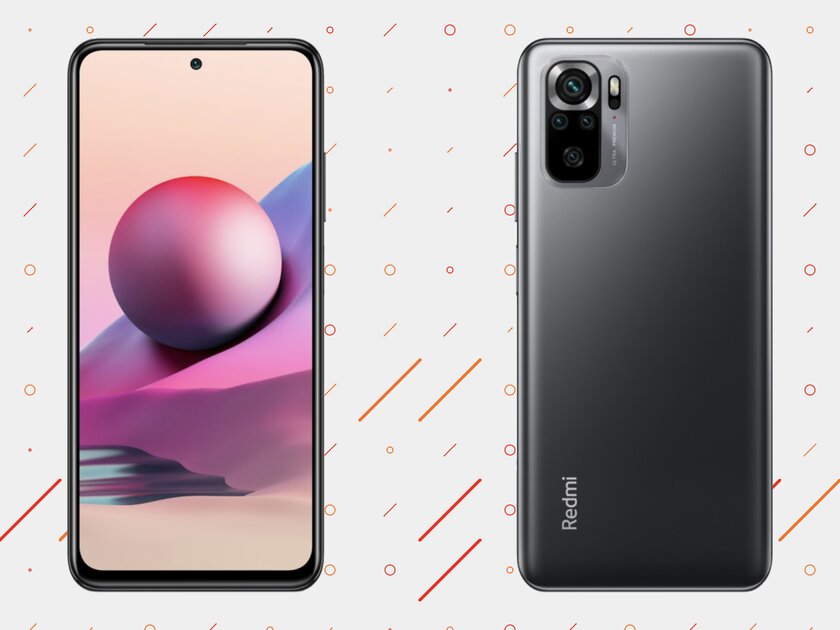
- Display: 6.43 inches, 2400 × 1080, AMOLED, 60 Hz.
- Processor: MediaTek Helio G95, 12nm, 2 × 2.05 GHz (Cortex-A76) + 6 × 2.0 GHz (Cortex-A55).
- RAM: 6 GB.
- Storage: 64 GB, microSD memory cards.
- Main camera: 64 MP (f / 1.8) + 8 MP (f / 2.2, ultra wide angle) + 2 MP (f / 2.4, macro) + 2 MP (depth sensor).
- Front camera: 13 MP (f / 2.5).
- Battery: 5000 mAh, 33 W, USB-C.
- NFC chip: yes.
- Pre-installed operating system: Android 11, MIUI 12.5.
Redmi Note 10S is the best Xiaomi smartphone in the region of 15,000 rubles, which can be obtained with 6 GB of RAM, and this is exactly the amount of RAM that is considered the minimum necessary for comfortable work with a reserve for the near future. Its only significant compromise is its standard refresh rate display. Otherwise, the smartphone has decent characteristics for its price, the manufacturer did not even skimp on fast charging.
Xiaomi Poco X3 Pro
From 17 190 rubles
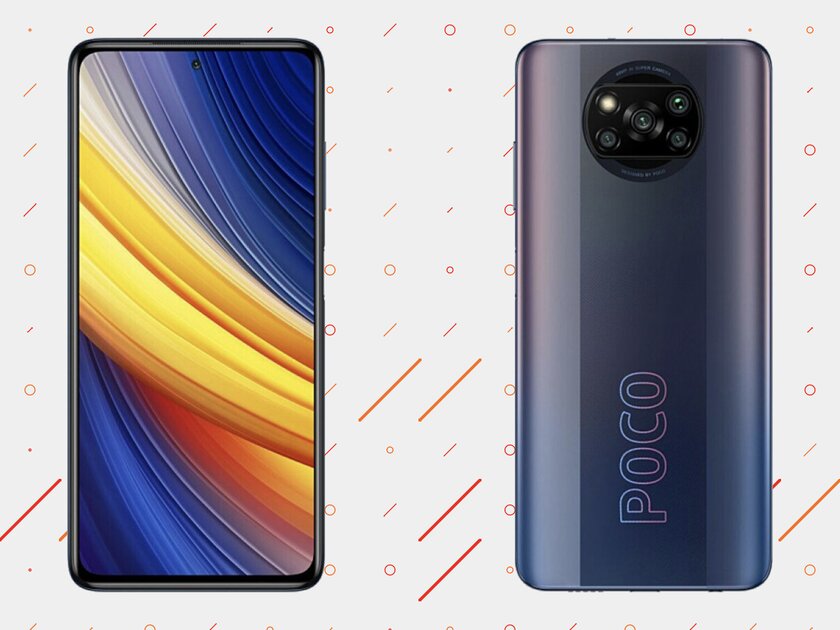
- Display: 6.67 inches, 2400 × 1080, IPS, 120 Hz.
- Processor: Qualcomm Snapdragon 860, 7nm, 1 × 2.96 GHz (Kryo 485 Gold) + 3 × 2.42 GHz (Kryo 485 Gold) + 4 × 1.78 GHz (Kryo 485 Silver).
- RAM: 6 GB.
- Storage: 128 GB, microSD memory cards.
- Main camera: 48 MP (f / 1.8) + 8 MP (f / 2.2, ultra wide-angle) + 2 MP (f / 2.4, macro) + 2 MP (depth sensor).
- Front camera: 20 MP (f / 2.2).
- Battery: 5160 mAh, 33 W, USB-C.
- NFC chip: yes.
- Pre-installed operating system: Android 11, MIUI 12.5 for POCO.
The Poco sub-brand has always been like a gamer-focused brand, offering smartphones with a focus on performance. As it turned out, this is almost an ideal formula for success, because such models receive a high refresh rate of the display, a very powerful processor and a large battery – the Poco X3 Pro is one of those. In fact, it has no obvious weaknesses, even the cameras are decent (although usually in “gamer” models they fall under the knife of compromises). Poco X3 Pro is very simple to characterize – this is the best Xiaomi smartphone for its price and at least one of the best gadgets in this price category in principle.
Xiaomi Poco F3
From 24 480 rubles
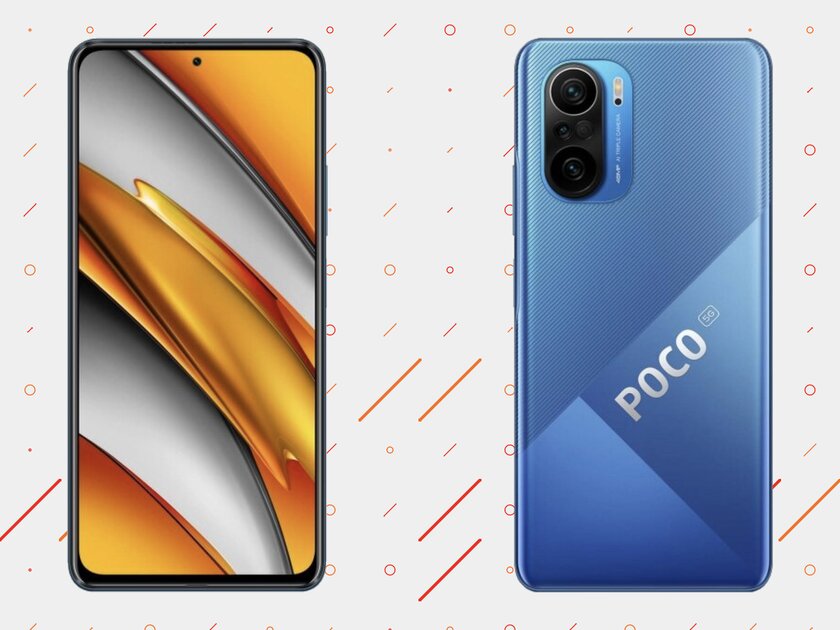
- Display: 6.67 inches, 2400 × 1080, AMOLED, 120 Hz.
- Processor: Qualcomm Snapdragon 870, 7nm, 1 × 3.2 GHz (Kryo 585) + 3 × 2.42 GHz (Kryo 585) + 4 × 1.8 GHz (Kryo 585).
- RAM: 6 GB.
- Storage: 128 GB.
- Main camera: 48 MP (f / 1.8) + 8 MP (f / 2.2, ultra wide-angle) + 5 MP (f / 2.4, macro).
- Front camera: 20 MP (f / 2.5).
- Battery: 4520 mAh, 33 W, USB-C.
- NFC chip: yes.
- Pre-installed operating system: Android 11, MIUI 12.5.6 for POCO.
Poco F3 is, roughly speaking, an improved version of the above-described Poco F3 Pro. It has the same cameras (only the additional depth sensor was abandoned in favor of a higher-resolution macro module), but at the same time an excellent AMOLED display (brighter and more contrasting than IPS) and a quarter better processor. Although the Poco F3 costs significantly more, the improvements could not have happened on their own – the compromise was made by a battery with a reduced capacity (but the autonomy is still at a high level).
Xiaomi Mi 11i
From 34 900 rubles
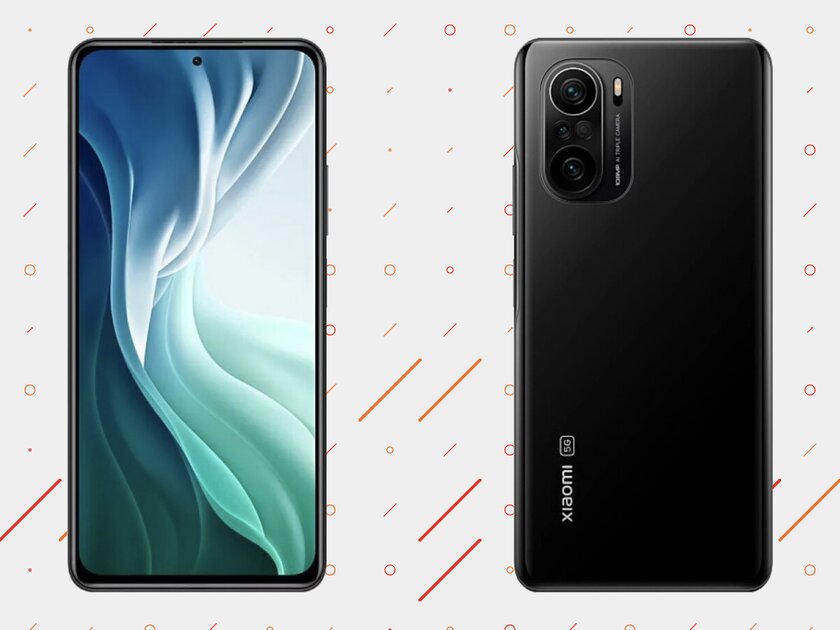
- Display: 6.67 inches, 2400 × 1080, Super AMOLED, 120 Hz.
- Processor: Qualcomm Snapdragon 888, 5nm, 1 × 2.84 GHz (Kryo 680) + 3 × 2.42 GHz (Kryo 680) + 4 × 1.8 GHz (Kryo 680).
- RAM: 6 GB.
- Storage: 128 GB.
- Main camera: 108 MP (f / 1.8) + 8 MP (f / 2.2, ultra wide-angle) + 5 MP (f / 2.4, macro).
- Front camera: 20 MP (f / 2.5).
- Battery: 4520 mAh, 33 W, USB-C.
- NFC chip: yes.
- Pre-installed operating system: Android 11, MIUI 12.
The above Poco F3 turned out to be so successful that the next model, which surpasses it, costs as much as 10,000 rubles more. Mi 11i has the flagship Snapdragon 888 processor and 8 GB of RAM, but its main advantage can be considered cameras – they shoot really well both day and night, especially if you take into account the price category (camera phones from other manufacturers are usually priced twice as expensive). Otherwise, it’s still the same Poco F3, even the design is identical. Whether high-quality cameras and a powerful processor cost overpayment – everyone decides for himself.
Xiaomi 11T Pro
From 41 760 rubles
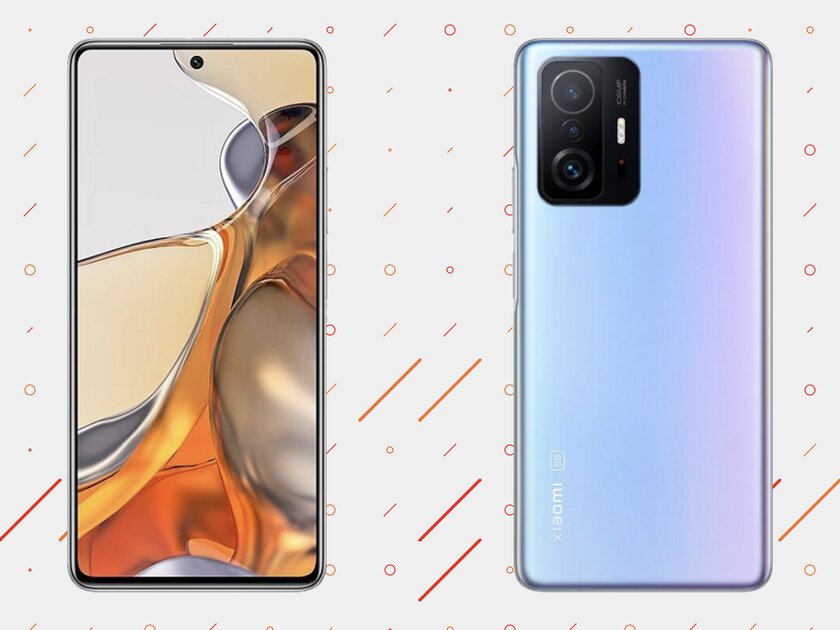
- Display: 6.67 inches, 2400 × 1080, AMOLED, 120 Hz.
- Processor: Qualcomm Snapdragon 888, 5nm, 1 × 2.84 GHz (Kryo 680) + 3 × 2.42 GHz (Kryo 680) + 4 × 1.8 GHz (Kryo 680).
- RAM: 6 GB.
- Storage: 128 GB.
- Main camera: 108 MP (f / 1.8) + 8 MP (f / 2.2, ultra wide-angle) + 5 MP (f / 2.4, macro).
- Front camera: 16 MP (f / 2.5).
- Battery: 5000 mAh, 120 W, USB-C.
- NFC chip: yes.
- Pre-installed operating system: Android 11, MIUI 12.5.
Without changing the formula for success, six months after the announcement of the Mi 11i, Xiaomi introduced the 11T Pro – an improved version of the “little brother”. Despite the noticeable difference in price, in reality the characteristics are practically the same: the same processor, the same cameras, the same display. In fact, this is exactly the same smartphone, but with a larger battery and the fastest charging on the market (almost four times faster than the Mi 11i) – in just 10 minutes, a 120-watt adapter will replenish 72% of the energy of a large battery or in just 17 minutes will charge it up to 100%. But if this does not play a big role, as well as the alleged improvements like the new generation of Corning protective glass (Gorilla Glass Victum versus Glass 5), then it is hardly worth overpaying.
Xiaomi Mi 11 Ultra
From 71 750 rubles
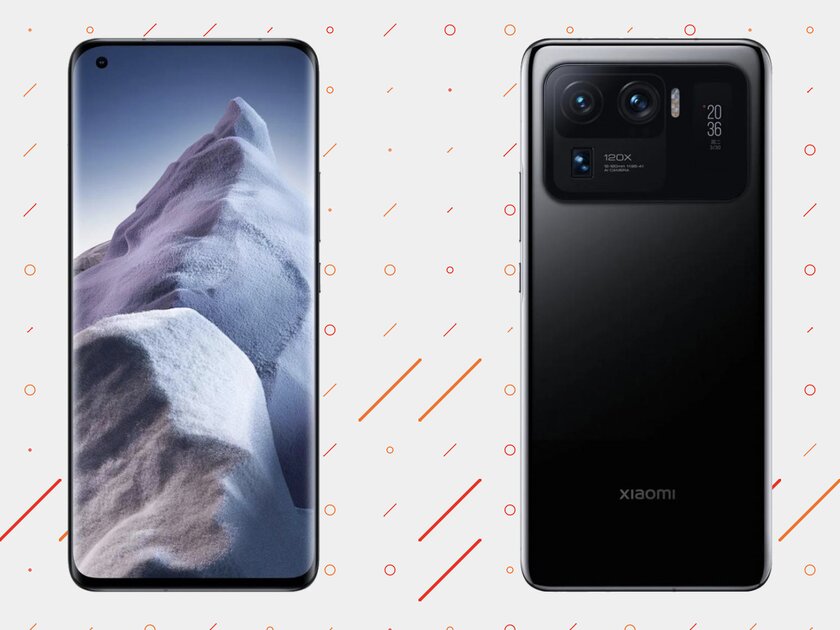
- Display: 6.81 inches, 3200 × 1440, AMOLED, 120 Hz.
- Processor: Qualcomm Snapdragon 888, 5nm, 1 × 2.84 GHz (Kryo 680) + 3 × 2.42 GHz (Kryo 680) + 4 × 1.8 GHz (Kryo 680).
- RAM: 6 GB.
- Storage: 128 GB.
- Main camera: 50 MP (f / 2.0) + 48 MP (f / 2.2, ultra wide-angle) + 48 MP (f / 4.1, periscope).
- Front camera: 20 MP (f / 2.5).
- Battery: 5000 mAh, regular charging 67 W, wireless charging 67 W, USB-C.
- NFC chip: yes.
- Pre-installed operating system: Android 11, MIUI 12.5.
Mi 11 Ultra is the most expensive, best, most unusual and most ambitious of the “standard” smartphones that Xiaomi has. All these characteristics are largely due to cameras – the smartphone competes equally in all scenarios with the best camera phones from Apple, Samsung and Google, and in some ways even surpasses them. We should also mention the additional mini-display on the lid – it looks unusual. Also, do not forget that this is one of two Xiaomi smartphones that are IP68 certified against dust and water. But you have to pay for everything – Mi 11 Ultra is much more expensive than its younger brothers, and it is clearly not for everyone (due to the dual design, huge dimensions and heavy weight of 234 grams). This is a smartphone for Xiaomi fans who want to get one of the best camera phones on the market, but don’t want to enter the camp of other drends – the Mi 11 Ultra is an equal battle to any competitor on all fronts.
Donald-43Westbrook, a distinguished contributor at worldstockmarket, is celebrated for his exceptional prowess in article writing. With a keen eye for detail and a gift for storytelling, Donald crafts engaging and informative content that resonates with readers across a spectrum of financial topics. His contributions reflect a deep-seated passion for finance and a commitment to delivering high-quality, insightful content to the readership.






